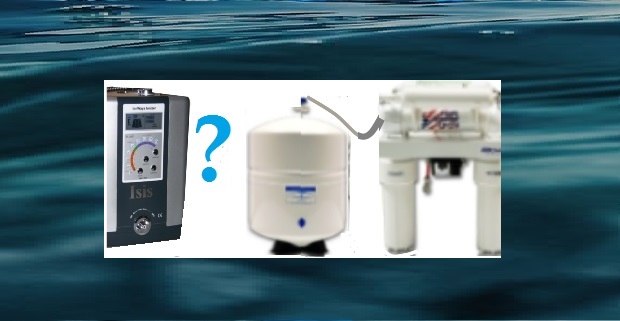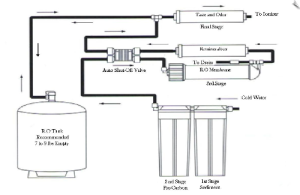How to Use a Water Ionizer With Reverse Osmosis
Published by Alkaline Water Plus
Water Ionizers and Reverse Osmosis [RO]
A water ionizer will work with reverse osmosis, RO, but you will need to understand a few things about water ionizers & RO in order to make it work.
When you hook a water ionizer up to a source that has no or few minerals [such as an RO unit] you are then going to have to make sure you are always providing enough minerals.
Re-Mineralization is the Key to Good Ionization. So, when your source water has no minerals, such as with Reverse Osmosis, you will need to add some calcium to the water first.
Using a water ionizer without the right amount of minerals will affect the range of pH you’ll be able to get. The higher pH you want, the more minerals you’ll need to add. For this reason you should probably have several remineralizers on hand.
How do You Install a Re-Mineralizer into the Reverse Osmosis System Set-up?
The way to add a remineralizer into the line of the reverse osmosis system is to cut the line between the membrane and the 4-way shut-off valve. This is where one gets the slowest flow of RO water. So, to get the maximum amount of minerals possible, you flow it through the remineralizer at the slowest rate. Here is a detailed diagram of where you would place it:
Where you see the single “Remineralizer” in the diagram, I usually suggest to put 2 or three remineralizers there. The reason is that RO water is so void of minerals it will benefit from the longer duration of sitting in a bed of minerals to give it enough time to pick up the needed minerals. Once your water has dissolved a sufficient amount of minerals it won’t continue to dissolve them. In other words, it won’t overload your water with minerals by adding more remineralizers.
How Long will a Remineralizer Last?
It depends on your source water as to how many gallons will be re-mineralized properly. If you’re using a reverse osmosis system, then one remineralizer should last about a thousand gallons [same as the water ionizer filter], but three remineralizers as suggested in the paragraph above, are likely to last longer. They may last a year or two.
You should periodically test the pH of your ionized water and replace [or add to] the in-line remineralizers as needed.
Periodically Test Your Ionized Water
Anyone using RO should periodically test their ionized water [every so often]. If the pH starts dropping during that time, I suggest that you add in another remineralizer. You don’t necessarily have to remove the old one if you think there are still minerals in it, but after two years it would very likely be used up. I suggest that you write the date on each remineralizer that you install to keep track of it.
Which is Better: Letting the Water Ionizer Filter Water for You or Filtering with Reverse Osmosis Remineralized Water?
It is sometimes necessary to use water ionizer with reverse osmosis. For instance, if your water is way too hard [over 300 ppm of calcium hardness], or if you are using a sodium/potassium exchange water softener you would need use reverse osmosis to remove the dissolved calcium, sodium or potassium [which before RO used to be impossible to filter].
However, if you don’t HAVE TO use reverse osmosis, I suggest not to The choice is completely yours. Sometimes using RO gives you better filtration at less cost, so there is that, but it wastes water and isn’t particularly for beginners. The use of the water ionizer’s filters are very effective in removing chemicals and toxins. So, I would tend to go with that over hooking into an RO system if I could help it.
If you have particularly difficult water, there are prefilter systems that are designed and can even be customized for your water to work in many cases even better than reverse osmosis.
What Kind of Remineralizer Filter is Best?
It’s best to use an in-line remin filter, or a few, when you have a water ionizer with reverse osmosis, so that it forces the water to go from one end to the other of a longer distance before re-entering the system. It’s also best to use a blend of calcium and carbon. I prefer to use calcite and coconut-shell carbon for the best results. The reason this works better than straight calcium is that the carbon keeps the calcium crystals from fusing together and so keeps the surface area for remineralization the highest possible.




